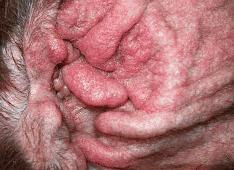What’s microchipping? Does it cause skin problem?
Micro-chipping is now the most common internationally recognized means of identifying companion animals.
1) What is a microchip?
Microchip is a Radio Frequency Identification Device (RFID). It is actually a basic computer complete with a radio receiver and transmitter with aerial attached.
2) How many types of identification numbers and microchips are there?
Different manufacturers in the past produce different type of microchips and thus different identification system. Currently, efforts are put in place to ensure compatibility and consistent distinctive identification numbers produced between these different manufacturers worldwide. We currently use International Standards Organisation (ISO), technically referred to as FDX-B in Singapore and most parts of the world.
3) Are all microchips the same?
Microchips are encapsulated in glass. Some have these glass capsules coated or attach to plastic caps to prevent migration; others, may not have.
4) After implantation, is there a need to plaster the point of entry (of the needle) to prevent bacteria infection and microchip from falling out?
The skin of dogs, cats, rabbits and G. pigs are more elastic compared to that of humans. If microchipped properly (with sterilised microchip gun and microchip), the vet will be able to gently massage the area of insertion to ensure the elasticity of the skin seals the entry site. However, if in doubt, a little tissue glue over the wound can be helpful. Generally, tissue glue is imperative in reptiles.
If done properly, and with sterilised equipments, the chance of infection is low. As such, without infection, the skin should heal up over the next few days.
If done properly, and with sterilised equipments, the chance of infection is low. As such, without infection, the skin should heal up over the next few days.
5) Is it advisable to anaesthetize my pet dog for microchipping?
When anaesthetized, there is a tendency for the microchip to be implanted too laterally if the animal is in lateral recumbency (that is lying on its side during anesthesia). As such, it is important that the animal is in a relatively normal lying position to ensure the microchip is implanted in the midline (dorsal to the scapula- that is slightly forwards just infront of the shoulder blade). If an animal is not too stressed or not aggressive during microchipping, no general anesthesia is required. You may however enquire about localized pain killer to the site of injection, if you are concerned.
6) How is the microchip read?
It is read by a compatible microchip reader. The reader emits a radio signal that energises the microchip. Once energized, it responds by transmitting a signal back to the reader. An ISO microchip will respond by transmitting back a 15 digit number embedded in the microchip, displaying the number on the screen of the microchip reader.
7) Problems with microchips. Does it cause bad skin problem at where the microchip is?
Generally extremely safe. There have been isolated reports of microchip glass bursting; and, the rare (perhaps unproven) inflammatory respond at the site (red and inflammed skin, sometimes hardened).
Dr. Tan Eng Khim,
Veterinary Surgeon
Animal Medical Centre (VET@RV) Pte. Ltd. (http://www.VETatRV.com/)
BSc (Vet Bio), BVMS (Murdoch);
Postgrad Cert Vet Studies in Small Animal Practice (Murdoch);
MRCVS(U.K.);
BSc merit (Microbiology/Comp Prgm) NUS;
Cert Wildlife Utilisation (Pretoria);
S'pore Society of Microbiology and Biotech (Ord. Member).
Dr. Tan Eng Khim,
Veterinary Surgeon
Animal Medical Centre (VET@RV) Pte. Ltd. (http://www.VETatRV.com/)
BSc (Vet Bio), BVMS (Murdoch);
Postgrad Cert Vet Studies in Small Animal Practice (Murdoch);
MRCVS(U.K.);
BSc merit (Microbiology/Comp Prgm) NUS;
Cert Wildlife Utilisation (Pretoria);
S'pore Society of Microbiology and Biotech (Ord. Member).

